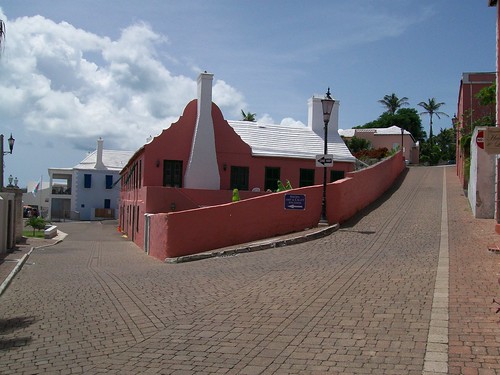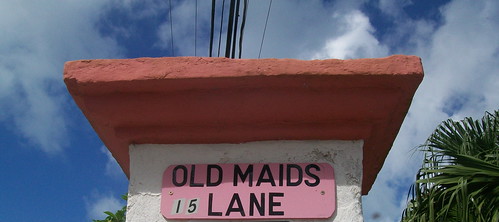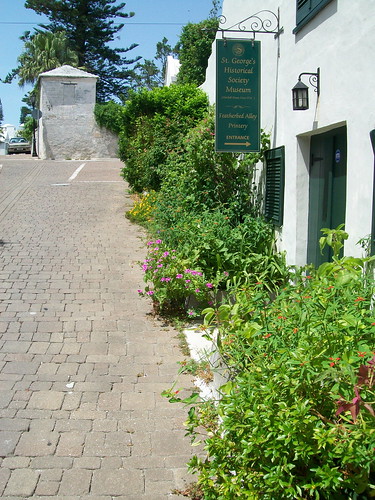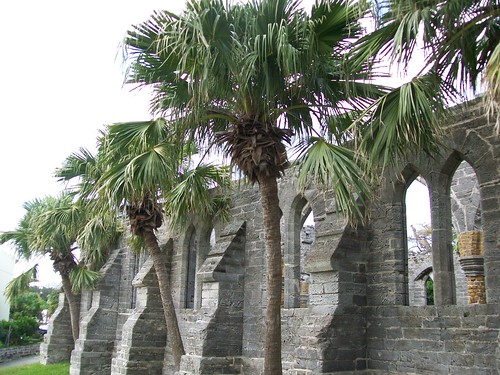Named after the patron saint of England, the town of St. George was founded in 1612 by Bermuda’s first Governor, Richard Moore. The streets of St. George’s, composed of confusing, winding one-way streets, were designed as only footpaths for the original settlers who arrived in 1612 on board the Plough.
With the exception of a small group of streets, during the 1700’s and most of the 1800’s streets remained unnamed in St. George. The handful of streets that were given names, were named for the people who lived on those streets or where that street would take you. Water Street is an example of this. Water Street is named for its' parallel location to the waterfront, and has maintained that name even today.

A view of the one-way cobblestone paved Water Street
In order to show allegiance to the British Crown after the American Revolution, many streets were renamed. Streets now bore the name King, Queen, and Princess as well as roads named after the Dukes of York, Kent, and Clarence. Later, during the 1800’s, colloquial names became popular, such as Old Maid’s Lane and Blacksmith’s Hill - named after Samuel Brown, a local Blacksmith whose shop was located at the base of the hill.

Old Maids Lane street sign
With tourism becoming more and more popular, a surge of street naming was taken with the utmost importance in order to pay homage to the history of the town. There are streets such as Blockage Alley, named for Major Norman Walker, the Confederate shipping agent, who resided there from 1891-1895; Barber’s Alley, named after Joseph Rainey, the free black American who escaped during the Civil War to open a barber’s shop in town and later became the first black American to occupy a seat in the U.S. House of Representatives; and located in the heart of town, Printer’s Alley, named after the location of Bermuda’s first newspaper, Stockdale House.

St. George's Historical Society Museum located off Church Lane and near Blockage Alley
At two opposite ends of the spectrum are Church Lane, named after St. Peter’s church, the oldest continuously operated church outside Great Britain, and Church Folly Lane, named for the Unfinished Church whose construction began in 1874 and was never completed.

The Unfinished Church located at the top of Church Folly Lane
To preserve its rich cultural history, St. George became a UNESCO World Heritage Site in 2000. Erected in 2009, the World Heritage Center houses a wealth of local history and fanfare for both visitors and locals alike. The center provides a comprehensive look at the town, as well as the colorful history of street naming in St. George. There is also a Trip Planning Area where you can plan your own self-guided walking tour of the previously mentioned streets.
This year, St. George’s celebrates 400 years of rich cultural history with events planned throughout the year. There will be tours, lectures, and special church services, as well as many planned activities for children. During this year-long celebration, there will also be guided walking tours that will transport you to the 17th century as you walk along St. George’s quaint and charming streets. As you follow your tour guide along, keep in mind how something as innocuous as a street sign can hold such history for generations to come in this lovely historic town.
Lindsey Lehman is the Bermuda Editor for Wandering Educators
All photos courtesy and copyright Lindsey Lehman. Feature photo: The view down Church Lane
